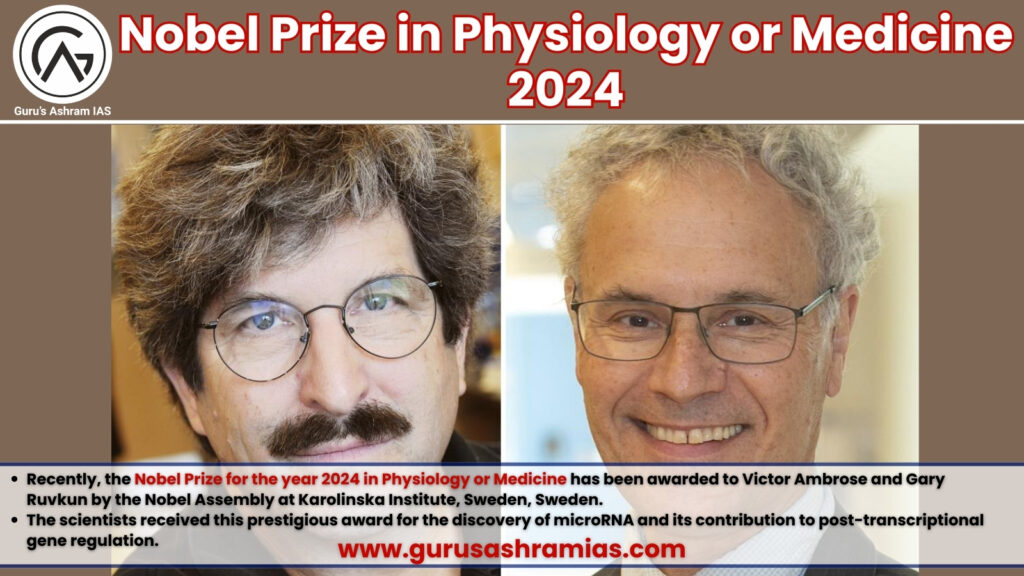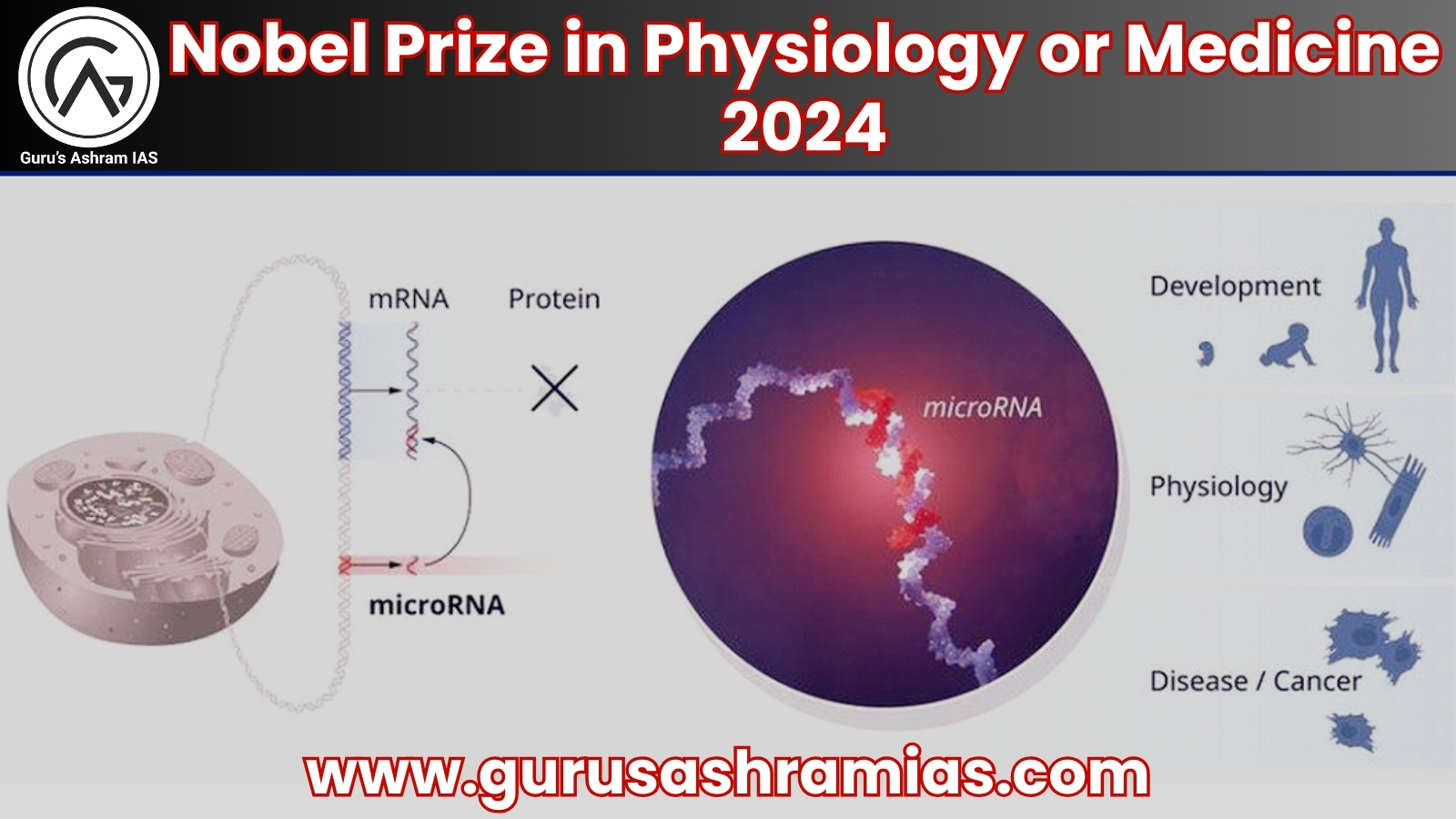2024 Nobel Prize in Physiology or Medicine
- Recently, the Nobel Prize for the year 2024 in Physiology or Medicine has been awarded to Victor Ambrose and Gary Ruvkun by the Nobel Assembly at Karolinska Institute, Sweden, Sweden.
- The scientists received this prestigious award for the discovery of microRNA and its contribution to post-transcriptional gene regulation.
Note:
- The 2023 Nobel Prize in Physiology or Medicine has been awarded to Caitlin Carrico and Drew Weissman for their work on messenger ribonucleic acid (mRNA).
- John J. Hopfield and Geoffrey E. Hinton have been awarded the 2024 Nobel Prize in Physics for their work on modern artificial neural networks (ANN) and machine learning (ML).
Who won the Nobel Prize for the discovery of microRNA?
The initial research:
- C. Elegance model: Ambrose and Ruvkun studied the roundworm C. elegans to understand tissue development.
- Mutant strains: They analysed mutant strains Lin-4 and Lin-14 with abnormalities in genetic programming.
Ambrose’s research:
- Ambrose found that lin-4 blocked the activity of lin-14 but could not figure out how this happened.
- They cloned Lin-4 and discovered a small RNA molecule without protein-coding ability. This showed that the RNA molecule can inhibit Lin-14.
Ruvkun’s research:
- They found that Lin-4 did not block Lin-14 mRNA production, but instead regulated it by inhibiting subsequent protein production. A short Lin-4 sequences corresponded to the major complementary segments in the Lin-14 mRNA.
- Ambrose and Ruvkun found that Lin-4 microRNA binds to Lin-14 mRNA and blocks protein production.
Importance:
- The Search for Let-7: Ruvkun’s group later discovered Let-7, a microRNA present throughout the animal kingdom.
- Understand the current situation: MicroRNAs are available in abundance, which play an important role in gene regulation in multicellular organisms.
Note:
LIN-4 (let-7):
- LIN-4 (let-7) is a microRNA identified from developmental time studies in the nematode Caenorhabditis elegans. It was the first to be discovered in miRNAs, a class of non-coding RNAs involved in gene regulation.
Lin-14:
- It is a heterochronic gene, which controls the timing of developmental events in the nematode Caenorhabditis elegans.
- Heterochronic genes are genes that control the timing of cell and tissue growth in an organism.
microRNA:
- The body synthesizes proteins through a complex process that consists of two main steps: transcriptional and translational.
- In the transcription step, the D-oxyribonucleic acid (DNA) sequence in the cell nucleus is copied into messenger ribonucleic acid (mRNA).
- The mRNA then travels out of the nucleus through the cell membrane and attaches to the ribosome.
- In the translation step, the transfer RNA (T-RNA) transports specific amino acids to the ribosome, where they join together in a sequence determined by the mRNA to form a protein.
- miRNA plays a regulatory role in the process of protein production by binding to mRNA at a specific stage and making it permanent.
- This regulation occurs through a mechanism called post-transcriptional gene regulation, which ensures that protein synthesis is controlled.
The winners:
- Ambrose and Ruvkun are both American biologists. Ambrose currently works in the molecular medicine program at the University of Massachusetts.
- Ruvkun is a professor of genetics at Harvard Medical School and research microRNA and RNA interference.
- H. Robert Horwitz, under whom both biologists served as postdoctoral fellows, won the Nobel Prize in Physiology or Medicine in 2002.
- Ambrose was the first person to clone micro-RNA, and Ruvkun created the second clone, which proved to be an important milestone in this field.
Applications of Discovery:
Abnormal regulation and disease:
- Cancer: Abnormal microRNA regulation can contribute to the development of cancer.
- The change: Mutations in microRNA genes have been linked to conditions such as hearing impairment, eye and skeletal disorders.
The future applications:
- Although microRNAs have immense potential, they currently have no direct clinical application.
- More research and deeper understanding on micro–RNA is required for future applications.







